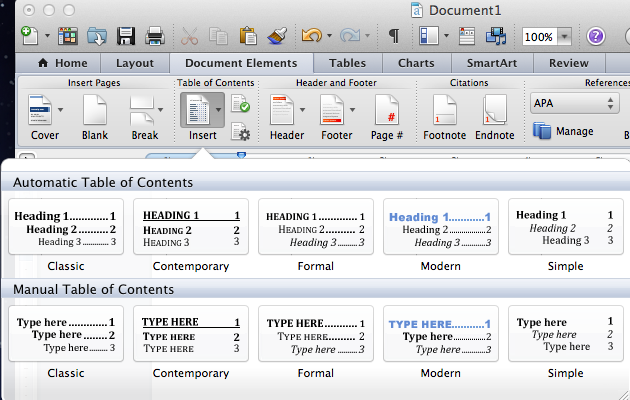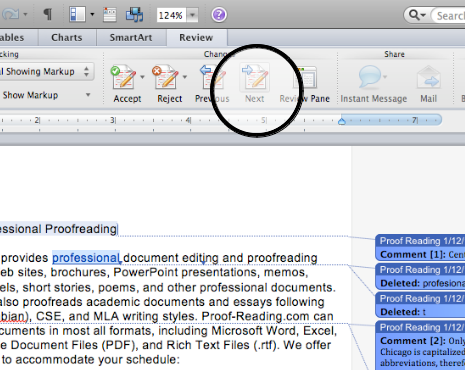Note: The steps to install the 2016 or 2013 versions of Office Professional Plus, Office Standard, or a stand-alone app such as Word or Project might be different if you got Office through one of the following: Microsoft HUP: If you bought Office for personal use through your company, see Install Office through HUP. Volume license versions: If you work in an organization that manages your. Microsoft Office for Mac; Word; How to Add an Automatic Page Number in Word 2013; How to Add an Automatic Page Number in Word 2013. Word 2013 can not only automatically number your pages, but it also lets you place the page number just about anywhere on the page and in a variety of fun and interesting formats. Start your page.
OfficeSuite Group Compatible with Microsoft® Office Word® Excel® & PowerPoint® and Adobe® PDF for PC Windows 10, 8.1, 8, 7 - 1-year license, 5 users by MobiSystems 3.8 out of 5 stars 46. Download Free Microsoft Word 2016 for Mac Full Version. If you looking on the internet an Microsoft Word for Mac So, you come to the right place now a day shares with you an amazing application its most popular and used the able product for Microsoft word for Mac full version Design for documents formatting tools, you can write a document and edit online shares and save online Web browser. Microsoft word 2013 for mac free download - Microsoft Word, Microsoft Office 2011, Coolmuster PDF to Word Converter for Mac, and many more programs.
Microsoft Word began life as Multi-Tool Word for Xenix in 1983. It was renamed Microsoft Word and ported to MS-DOS in 1983, the Macintosh in 1985, and Windows in 1989. It has been the dominant word processing program on the Mac since 1988 and on Windows since 1993.
When Apple introduced the original Macintosh in January 1984, it also introduced two programs so Mac users could do something with the new computer, MacWrite and MacPaint. With these essentially free apps bundled with the computer, it would be an uphill battle to sell alternative word processing and paint programs – but that didn't stop anyone.
Word was rooted in Bravo, the GUI word processor created at Xerox PARC. Microsoft hired Charles Simonyi, Bravo's 'father', in 1981, and Multi-Tool Word was released for Xenix in 1983. It was ported to MS-DOS later in the year, where the name was simplified to Word. Word was the first WYSIWYG (or semi-WYSIWYG) word processing program for DOS – it could display bold, italic, and underlined text, although it could not display different typefaces or sizes. Word for MS-DOS was designed to work with a mouse, and Microsoft even offered a bundle that included Word and the new-fangled input device. The mouse and semi-WYSIWYG display gave Word two big advantages over Wordstar, then the most popular word processing software in the world, and WordPerfect, the rising star in the DOS world.
Word for MS-DOS had been written to support high-resolution displays, even though DOS computers didn't yet have them, which made it easier to port the program to the Macintosh. The first version of Word for Mac was released in 1985, and Word 3.0 in 1987. (There was no Word 2.0 for Mac. The second version was called 3.0 to match the numbering of the current DOS version.)
Microsoft Word 2013 For Mac
Unfortunately, Word 3.0 was 'plagued with bugs', and within a few months Microsoft fixed them and mailed free Word 3.0.1 disks to all registered Word 3.0 users. Word 4.0 came to market in 1989, the same year that Apple spun off its software to its Claris subsidiary and MacWrite stopped being free. By this time, Microsoft already owned the Mac word processing market with over 50% of market share. MacWrite II peaked at just over 30% market, quickly dropping off until Apple discontinued MacWrite Pro in 1994.
Mac word processor market share by units, 1988 to 1997.
Many Mac users consider Word 5.1a to be the best version ever released. The original Word 5.0 for Mac reached the market in 1991, and the upgrade to 5.1 in 1992. After all those years, Word still worked very well on compact Macs with their 9″ 512 x 342 pixel black and white displays.


Word 6.0, launched in 1993, is widely considered to be the worst version of Word ever for the Mac, as it was based on the same codebase as Word 6.0 for Windows. That meant that it looked and worked more like Windows software than a Macintosh program. Mac users were so up in arms that Microsoft actually released a Word 5.1 downgrade to unhappy Word 6.0 owners.
It was five years before Microsoft unleashed another version of Word for the Mac, and at that point Microsoft adopted a new numbering scheme: Henceforth versions of Word would be identified by the year of release, so the new version was Word 98 (Microsoft began this in 1995 with Word 95 for Windows). Subsequent versions of Word were 2001, v.X (the first version for Mac OS X, also released in 2001), 2004, and 2008, which is the current version.
Word 98 was the first version of Word that was not only file-compatible with Word 97 for Windows, but also compatible with macro viruses.
Mac Version History
This article is a work in progress dusted off from 2008 and is in need of updates.
Word 1.0
1985
Word 3.0
1987
Word 4.0
1989: Last version that can be run using a daul-floppy Mac.
Word 5.0/5.1
1991 (5.1 – 1992): Requires System 6.0.2, 512 KB of RAM (1 MB for 5.1, 2 MB to use spell check and thesaurus), 6.5 MB available hard drive space. Last version to support 68000-based Macs.
Ms Office For Mac 2013
Word 6.0

1993: Requires System 7.0, 4 MB of RAM (8 MB recommended), at least 10 MB available hard drive space, 68020 CPU. 68000-based Macs not supported.
Word 98 (8.0)
1997: Requires System 7.5 or later (7.5.5 recommended), PowerPC processor (120 MHz recommended), 16 MB of RAM installed, 640 x 480 8-bit color or 4-bit grayscale display, CD-ROM for installation. Part of Microsoft Office 98 Macintosh Edition.
Word 2001 (9.0)
2000: Last version for Classic Mac OS, runs in Classic Environment of Mac OS X. Requires Mac OS 8.0 through 9.2.2, 8.5 or later recommended. Application requires 10 MB of RAM with virtual memory enabled, 17 MB without it.
Word v.X (10.0)
2001: First version written for OS X
Word 2004 (11.0)
2004: First Mac version to use XML format.
Word 2008 (12.0)
2008
Word 2011 (14.3)

2011
Sources/Further Reading
- Microsoft Word, Wikipedia
- Word Refuseniks: Never Upgrade, Leander Kahney, Wired, 2006.17.05
- Why I Love Microsoft Word 5.1a, Erik Thau-Knudsen, 2006.09.13
- Goodbye, Cruel Word, Steven Poole, 2007.09.02
Double-click the Avery Word Template file you downloaded and saved to your copmuter. If the template looks like a blank page, select Table Tools > Layout > Show Gridlines to view the template layout.
Meet the brand-new companion app for your Microsoft Wireless Display Adapter.Personalization.Name the adapter.Change the adapter language.Customize the display wallpaper (new).Fit to display.Options for connecting quickly (new).Network.Connect your adapter to Wi-Fi for better performance (new).Update and security.Update firmware.Enable HDCP to stream digital copyrighted content (new).Enable PIN when connecting a new device.Enable password for adapter settingsApp features vary per adapter hardware. Wireless adapter for mac desktop.
Once the file is open, type your information into the template. Highlight the text you entered and use the tools in Microsoft Word to format the text.

Word 6.0, launched in 1993, is widely considered to be the worst version of Word ever for the Mac, as it was based on the same codebase as Word 6.0 for Windows. That meant that it looked and worked more like Windows software than a Macintosh program. Mac users were so up in arms that Microsoft actually released a Word 5.1 downgrade to unhappy Word 6.0 owners.
It was five years before Microsoft unleashed another version of Word for the Mac, and at that point Microsoft adopted a new numbering scheme: Henceforth versions of Word would be identified by the year of release, so the new version was Word 98 (Microsoft began this in 1995 with Word 95 for Windows). Subsequent versions of Word were 2001, v.X (the first version for Mac OS X, also released in 2001), 2004, and 2008, which is the current version.
Word 98 was the first version of Word that was not only file-compatible with Word 97 for Windows, but also compatible with macro viruses.
Mac Version History
This article is a work in progress dusted off from 2008 and is in need of updates.
Word 1.0
1985
Word 3.0
1987
Word 4.0
1989: Last version that can be run using a daul-floppy Mac.
Word 5.0/5.1
1991 (5.1 – 1992): Requires System 6.0.2, 512 KB of RAM (1 MB for 5.1, 2 MB to use spell check and thesaurus), 6.5 MB available hard drive space. Last version to support 68000-based Macs.
Ms Office For Mac 2013
Word 6.0
1993: Requires System 7.0, 4 MB of RAM (8 MB recommended), at least 10 MB available hard drive space, 68020 CPU. 68000-based Macs not supported.
Word 98 (8.0)
1997: Requires System 7.5 or later (7.5.5 recommended), PowerPC processor (120 MHz recommended), 16 MB of RAM installed, 640 x 480 8-bit color or 4-bit grayscale display, CD-ROM for installation. Part of Microsoft Office 98 Macintosh Edition.
Word 2001 (9.0)
2000: Last version for Classic Mac OS, runs in Classic Environment of Mac OS X. Requires Mac OS 8.0 through 9.2.2, 8.5 or later recommended. Application requires 10 MB of RAM with virtual memory enabled, 17 MB without it.
Word v.X (10.0)
2001: First version written for OS X
Word 2004 (11.0)
2004: First Mac version to use XML format.
Word 2008 (12.0)
2008
Word 2011 (14.3)
2011
Sources/Further Reading
- Microsoft Word, Wikipedia
- Word Refuseniks: Never Upgrade, Leander Kahney, Wired, 2006.17.05
- Why I Love Microsoft Word 5.1a, Erik Thau-Knudsen, 2006.09.13
- Goodbye, Cruel Word, Steven Poole, 2007.09.02
Double-click the Avery Word Template file you downloaded and saved to your copmuter. If the template looks like a blank page, select Table Tools > Layout > Show Gridlines to view the template layout.
Meet the brand-new companion app for your Microsoft Wireless Display Adapter.Personalization.Name the adapter.Change the adapter language.Customize the display wallpaper (new).Fit to display.Options for connecting quickly (new).Network.Connect your adapter to Wi-Fi for better performance (new).Update and security.Update firmware.Enable HDCP to stream digital copyrighted content (new).Enable PIN when connecting a new device.Enable password for adapter settingsApp features vary per adapter hardware. Wireless adapter for mac desktop.
Once the file is open, type your information into the template. Highlight the text you entered and use the tools in Microsoft Word to format the text.
Click the Insert tab in the Ribbon Toolbar to insert your own image, clip art, shapes and more.
Select your image in the template and click the Page Layout tab in the Ribbon Toolbar. Then click Text Wrapping and select In Front of Text in the drop down list.
How to create a sheet of all the same labels:
- Blank Templates
- Insert your information on the 1st label.
- Highlight all the content in the first label, right-click and select Copy
- Position the cursor in the next label, right-click and select Paste.
- Continue with Step 3 until all labels are filled with your information.
- Pre-Designed Templates:
- Use the Microsoft Word's Find and Replace formatting tool to replace all the pre-designed template text in each label with your own information.
